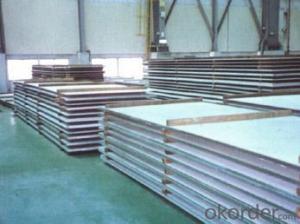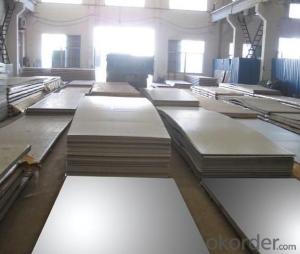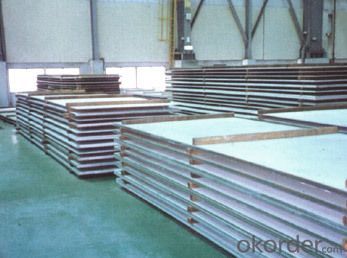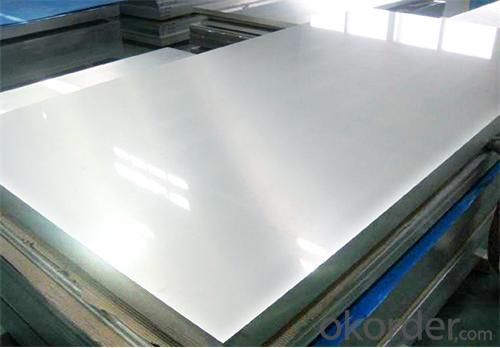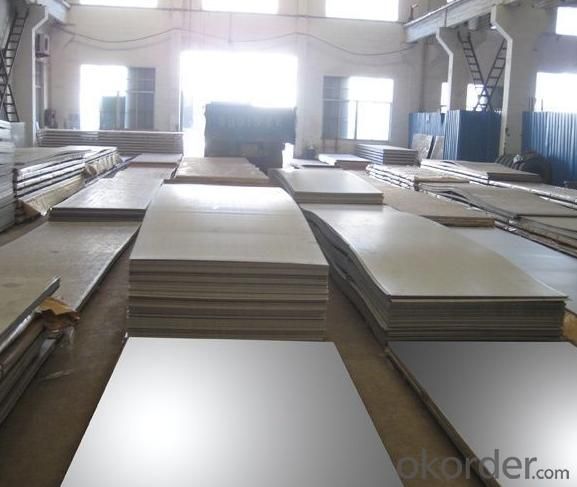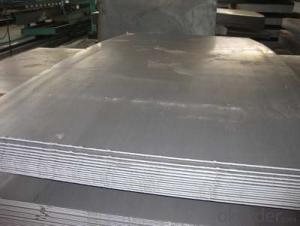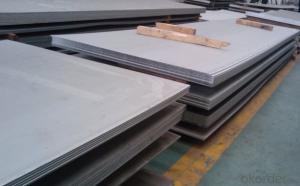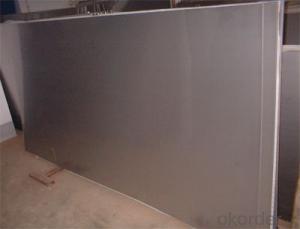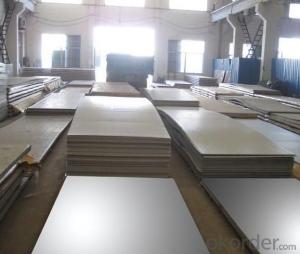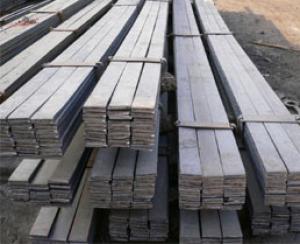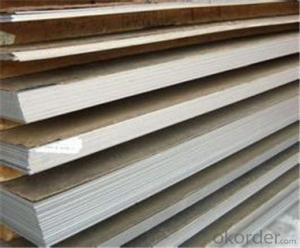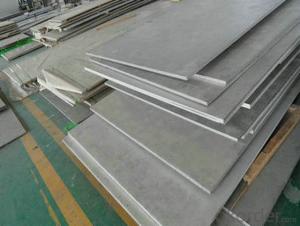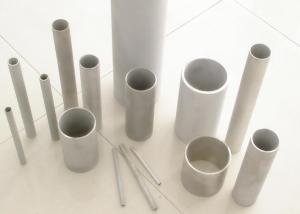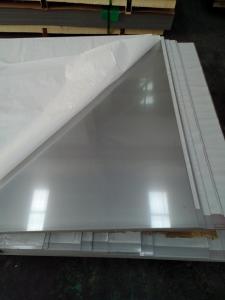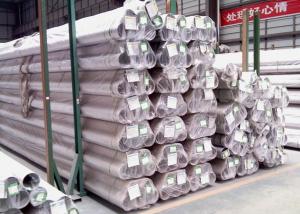Corrosion resistant plate 316 ;high quality
- Loading Port:
- Shanghai
- Payment Terms:
- TT OR LC
- Min Order Qty:
- 1000 m.t.
- Supply Capability:
- 3500 m.t./month
OKorder Service Pledge
OKorder Financial Service
You Might Also Like
Description
316L is a molybdenum containing austenitic stainless steel, with improved corrosion resistance over 304/304L stainless steel. The increased levels of chromium, nickel and molybdenum over 314L stainless steel improve chloride pitting resistance and general corrosion. Through the controlled addition of nitrogen it is common for 316L to meet the mechanical properties of 3167 straight grade, while maintaining a low carbon content.
Chemistry
| Item | Ni | Cr | Mo | Mn | Si | C | N | S | P | Fe |
|---|---|---|---|---|---|---|---|---|---|---|
| MIN | 11.0 | 18.0 | 3.0 | - | - | - | - | - | - | - |
| MAX | 15.0 | 20.0 | 4.0 | 2.0 | 0.75 | 0.03 | 0.1 | 0.03 | 0.045 | Balance |
Specifications
ASME SA 240
ASTM A 240
UNS S31703
W. NR./EN 1.4438
Inventory
316L Plate
Common Trade Names
316 Stainless steel , 316L Stainless steel , 316LMN stainless steel
Features
Improved general and localized corrosion to 316/316L stainless
Good formability
Good weldability
Applications
Flue gas desulfurization systems
Chemical process vessels
Petrochemical
Pulp and paper
Condensers in power generation
Physical Properties
Density: 0.285 lb/inch3
Melting Point: 2540 - 2630°F
Poisson's Ratio: 0.3
Electrical Resistivity: 475 Ohm-circ mil/ft
| Temperature,°F | 70 | 212 | 392 | 572 |
| Coefficient* of Thermal Expansion, in/in°F x 10-6 | - | 9.2 | 10.1 | 10.8 |
| Thermal Conductivity; Btu • ft/ft2 • hr • °F | 7.8 | - | - | - |
| Modulus of Elasticity Dynamic, psi x 106 | 29 | - | - | - |
*70°F to indicated temperature
Mechanical Properties
Minimum Specified Properties, ASTM A 240
| Ultimate Tensile Strength, ksi | 75 |
| 0.2% Yield Strength, ksi | 30 |
| Elongation, % | 40 |
| Hardness MAX, Brinell | 217 |
Typical Tensile and Impact Properties
| Temperature, °F | 70 | 200 | 400 | 600 | 800 | 1000 | 1200 | 1400 |
| Ultimate Tensile Strength, ksi | 82 | 76 | 71 | 71 | 71 | 68 | 51 | 31 |
| 0.2% Yield Strength, ksi | 42 | - | - | - | 27 | 23 | 22 | - |
| Charpy Impact V-notch, ft-lbs | 65 - 100 | - | - | - | - | - | - | - |
- Q: What is the coefficient of expansion of stainless steel sheets?
- The coefficient of expansion of stainless steel sheets typically ranges from 10.5 to 17.3 x 10^-6 per degree Celsius.
- Q: Can stainless steel sheets be used outdoors?
- Yes, stainless steel sheets can be used outdoors. Stainless steel is highly resistant to corrosion, making it an excellent choice for outdoor applications. It can withstand exposure to moisture, humidity, and extreme weather conditions without rusting or deteriorating. This makes stainless steel sheets suitable for various outdoor applications such as building facades, roofing, fencing, outdoor furniture, and decorative elements. Additionally, stainless steel is durable, easy to clean, and has a sleek appearance, making it a popular choice for outdoor use in residential, commercial, and industrial settings.
- Q: What specifications do stainless steel plates have?
- General door with 304 doors or rust does not look good they will call you to change at a loss if you can go ah edge thickness wall door frame to plate factory they can count you can also tell them such as simple frame or Rome head of the door is generally
- Q: Can stainless steel sheets be used for medical implants?
- Medical implants can indeed utilize stainless steel sheets. In the medical realm, stainless steel is frequently employed due to its remarkable resistance to corrosion, its strength, and its affordability. It is also biocompatible, meaning that it does not provoke any undesirable reactions when in contact with bodily tissues or fluids. To meet the distinct demands of medical implants, such as orthopedic plates, bone screws, dental implants, and cardiovascular stents, stainless steel sheets can be manufactured into a variety of shapes and sizes. Furthermore, stainless steel is easily cleanable and sterilizable, rendering it well-suited for implantation within the human body. However, it is important to note that different grades of stainless steel may possess varying attributes. As a result, it is crucial to choose the appropriate grade based on the specific application and requirements of the medical implant.
- Q: Can stainless steel sheets be used for roofing applications?
- Yes, stainless steel sheets can be used for roofing applications. Stainless steel is a durable and corrosion-resistant material, making it suitable for use in outdoor environments. It is commonly used in architectural applications, including roofing, due to its strength, longevity, and aesthetic appeal. Stainless steel roofing sheets are available in different thicknesses and profiles, allowing for versatility in design. Additionally, stainless steel is fire-resistant and can withstand extreme weather conditions, making it a reliable choice for roofs.
- Q: Can stainless steel sheets be used for escalator cladding?
- Yes, stainless steel sheets can be used for escalator cladding. Stainless steel is a popular choice for cladding materials due to its durability, corrosion resistance, and aesthetic appeal. It can withstand heavy usage and is resistant to wear and tear, making it suitable for escalators. Stainless steel sheets can be fabricated into various shapes and sizes, allowing for customization and seamless installation on escalator surfaces. Additionally, stainless steel has a sleek and modern appearance, enhancing the overall aesthetics of the escalator.
- Q: Are stainless steel sheets suitable for railway station platforms?
- Yes, stainless steel sheets are suitable for railway station platforms. Stainless steel is a highly durable material that can withstand heavy foot traffic and extreme weather conditions, making it an ideal choice for platforms in railway stations. It is resistant to corrosion, which is crucial in areas exposed to moisture, such as platforms where rain, snow, or spilled liquids may occur. Stainless steel sheets are also easy to clean and maintain, ensuring a hygienic and safe environment for passengers. Additionally, stainless steel has a sleek and modern appearance, adding to the aesthetic appeal of the railway station. Overall, stainless steel sheets provide the necessary strength, durability, and aesthetic qualities required for railway station platforms.
- Q: What is the fatigue strength of stainless steel sheets?
- The fatigue strength of stainless steel sheets may differ based on various factors, including the specific grade of stainless steel, the manufacturing process, the surface finish, and the testing conditions. Generally, stainless steel sheets exhibit high fatigue strength due to their inherent properties, such as their ability to withstand cyclic loading and their resistance to corrosion. Typically, the fatigue strength of stainless steel sheets is measured in terms of stress amplitude (σa) or stress range (σr), indicating the level of stress the material can endure for a specific number of cycles before failure. Fatigue testing is often conducted to determine this, involving subjecting the material to repeated cyclic loading until it fails. The number of cycles required for failure is referred to as the fatigue life. Different grades of stainless steel possess varying fatigue strengths, with higher grades usually demonstrating greater resistance to fatigue. Austenitic stainless steels like 304 and 316, for example, exhibit excellent fatigue strength and are commonly employed in applications with significant cyclic loading, including structural components and automotive parts. The fatigue strength of stainless steel sheets can also be impacted by surface finish. Inadequate surface conditions, such as scratches, notches, or roughness, can act as stress concentrators and decrease fatigue strength. Hence, it is essential to ensure that stainless steel sheets possess a smooth and defect-free surface to maximize their resistance to fatigue. Additionally, environmental factors like temperature, humidity, and corrosive substances can influence the fatigue strength of stainless steel sheets. Elevated temperatures and aggressive environments can decrease the fatigue life of stainless steel. Therefore, it is crucial to consider these factors when designing for fatigue resistance. To summarize, the fatigue strength of stainless steel sheets is generally high due to their inherent properties. However, it can vary depending on factors such as the grade of stainless steel, surface finish, and environmental conditions. Conducting fatigue testing and considering these factors during the design process can help guarantee the optimal performance and durability of stainless steel sheets in applications involving cyclic loading.
- Q: What are the different types of punched finishes available for stainless steel sheets?
- There are several types of punched finishes available for stainless steel sheets, including round hole, square hole, slotted hole, and decorative patterns. Each type offers a unique aesthetic and functional purpose, allowing for customized designs and applications.
- Q: Are stainless steel sheets suitable for high-temperature environments?
- Stainless steel sheets are generally considered suitable for high-temperature environments. The reason for this is that stainless steel possesses exceptional heat resistance and retains its structural integrity even at elevated temperatures. The maximum temperature resistance of stainless steel depends on the specific grade used. Austenitic stainless steel varieties, such as 304 and 316, can endure temperatures as high as 870°C (1600°F). In contrast, ferritic stainless steel, like 430, has a slightly lower maximum temperature limit of approximately 760°C (1400°F). Moreover, the corrosion resistance, durability, and ease of maintenance of stainless steel sheets make them a popular choice for high-temperature applications.
Send your message to us
Corrosion resistant plate 316 ;high quality
- Loading Port:
- Shanghai
- Payment Terms:
- TT OR LC
- Min Order Qty:
- 1000 m.t.
- Supply Capability:
- 3500 m.t./month
OKorder Service Pledge
OKorder Financial Service
Similar products
Hot products
Hot Searches
Related keywords
